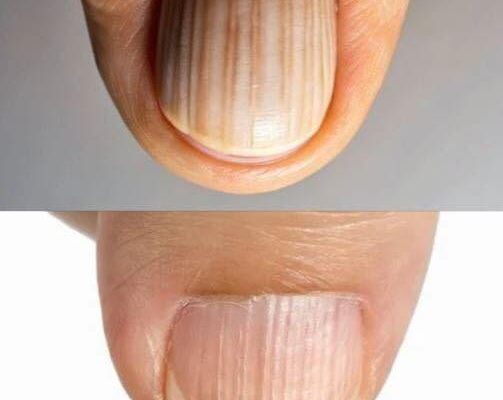It’s possible that we’ve looked at our hands and noticed some lines on our nails.
This almost always sparks curiosity and makes us wonder: Why do they appear? What can be done to make them go away? Lines on the nails can be a sign that we’re not eating as well as we should or that we might need to take better care of our health, among other things. Below, we’ll explain more about why these lines appear on nails, how they can be removed, and some useful tips to prevent them from appearing in the future.
Horizontal stripes (Beau’s lines)
Deep grooves running across your nails are often a sign that nail growth was temporarily interrupted. The issue occurred weeks or months earlier, and the line has since grown out from the cuticle. Potential causes include:
- Severe illness: High fever from conditions like measles, mumps, pneumonia, or COVID-19.
- Trauma: A direct injury to the nail, such as slamming a finger in a door.
- Nutrient deficiency: Low levels of zinc or protein.
- Uncontrolled diabetes: Fluctuations in blood sugar can damage tissues and interrupt nail growth.
- Chemotherapy: Medications that attack fast-growing cells can also affect nail matrix cells.
- Vascular disease: Conditions that reduce blood flow to the fingers and toes, such as Raynaud’s phenomenon.
- Kidney disease: Chronic conditions that can cause waste buildup and interrupt nail growth.
Vertical stripes (Onychorrhexis)
Vertical ridges that run from the cuticle to the tip of the nail are a common sign of the natural aging process, similar to wrinkles on the skin. While often harmless, more pronounced vertical ridges can indicate other issues, such as:
- Anemia: Iron deficiency is a common cause of vertical ridges and brittle nails.
- Nutrient deficiencies: A lack of B vitamins (especially B12) or folic acid can cause vertical ridges.
- Dryness: Dehydration of the nail plate due to dry skin or frequent exposure to water can make ridges more visible.
- Skin conditions: Inflammatory conditions like eczema or psoriasis.
- Thyroid disease: An underactive thyroid (hypothyroidism) can lead to brittle nails with vertical ridges.
- Rheumatoid arthritis: An autoimmune disorder that can affect nail health.
When to see a doctor
Most vertical ridges are no cause for concern. However, you should consult a doctor if you experience any of the following:
- Horizontal ridges, particularly if they appear on multiple nails.
- Sudden or dramatic changes in nail texture.
- Ridges accompanied by discoloration, swelling, or pain.
- Nails that are also becoming brittle, splitting, or separating from the nail bed.



